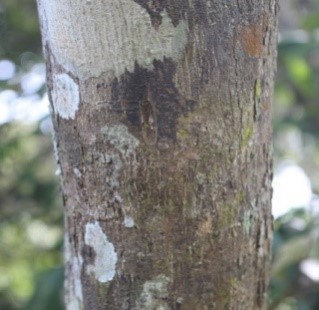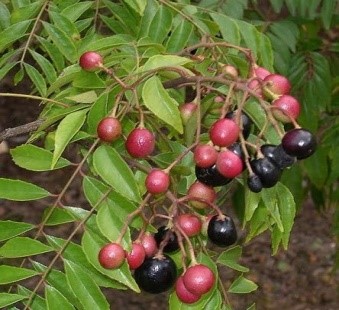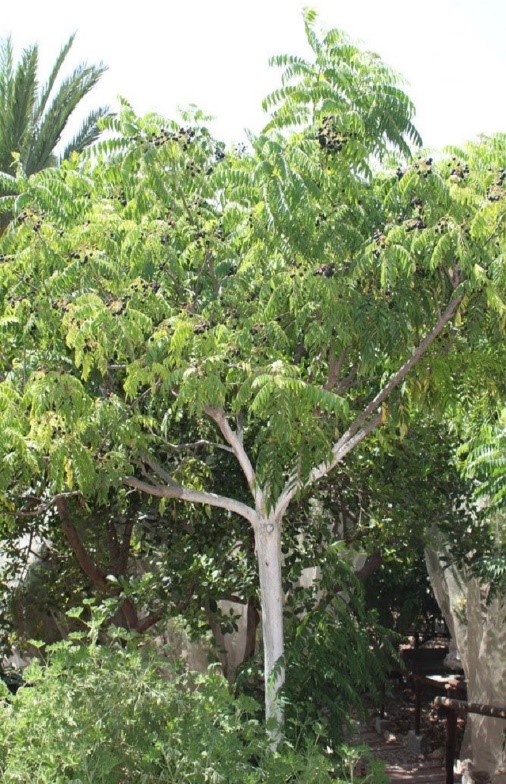Trees
Murraya koenigii L.
Murraya koenigii L.
Description :
This plant is a tropical to sub-tropical tree. It is a small tree having
height of 2 to 5m. The stem is dark green to brownish; the main stem is 14 to
18cm. Leaves are compound and about 30cm long, each compound leaf bears 24
leaflets which are 4 to 9cm long and 2cm wide. Flowers have good smell, and the
average diameter of a mature flower is about 1.12cm. Young or unripe fruit is
red in colour, and fully ripe fruits are black with a very shining surface. One
seed is present in each fruit. Curry tree is also called curry leaf tree or
curry bush, among numerous local names, depending on country.
Distribution :
The tree is native to Pakistan, India and Bangladesh. Commercial
plantations have been established in Pakistan, India, and more recently in
Australia. It grows best in well-drained soils in areas with full sun or
partial shade, grows preferably away from the wind. Growth is more robust when
temperatures are at least 18°C.
Uses :
The fruit is edible and can be eaten raw.
They are most widely used in cooking, usually fried along with vegetable oil,
mustard seeds and chopped onions in the first stage of the preparation. They
are also used to make local traditional dishes in the subcontinent for top
dressing as tarka. Leaves, the bark and the roots of the plant can be
used as a tonic and for the treatment of stomach problems. They are used as anthelminthics,
analgesics, digestives, and appetizers in Indian cookery. The green leaves of
the plant are used in treating piles, inflammation, itching, fresh cuts,
dysentery, bruises, and edema. The roots are purgative to some extent. They are
stimulating and used for common body aches. The bark is helpful in treating
snakebites.
(Chaudhary,
2020)



